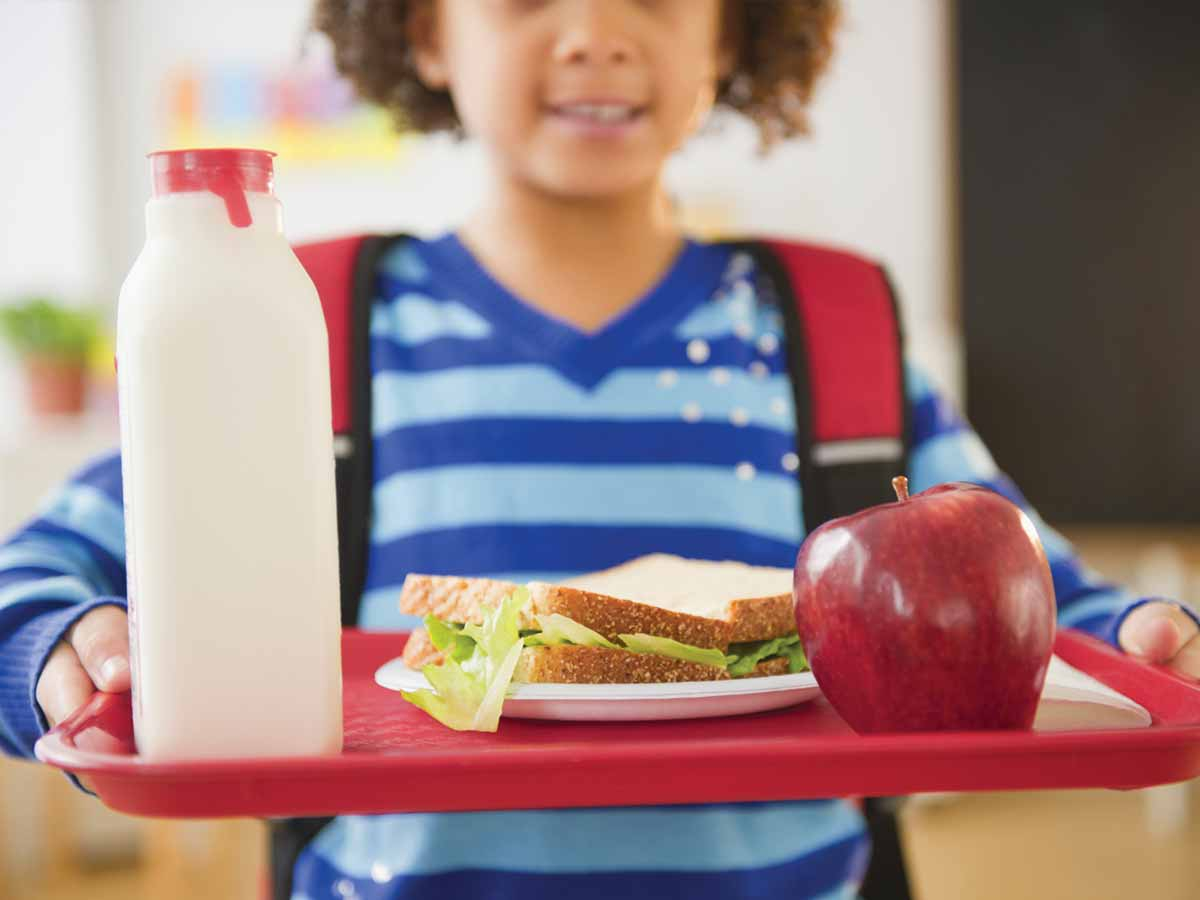‘Lunchflation’ plagues WNC schools

After three abnormal school years due to the Coronavirus Pandemic that included free breakfast and lunch for all public-school students, schools across North Carolina are returning to the paid model of nutrition services. Now, a confluence of factors has necessitated a sharp increase in school meal costs.
“The [free breakfast and lunch] waivers are due to run out and there is no sign that they will be extended at this point,” said David Lightner, school nutrition director for Macon County Schools. “There are a couple bills, but we are not guaranteed that any of those will pass, so we need to assume we will go back to normal this fall.”
The last normal school year for nutrition services was 2018-19. That year, almost three-quarters of all lunches served through the National School Lunch Program were served free or at a reduced cost.
Since then, a lot has changed. School nutrition programs throughout Western North Carolina pivoted to create grab-and-go meals for students when schools went remote. When classes came back in session, schools were able to provide breakfast and lunch to all students free of charge thanks to waivers from the United States Department of Agriculture. The USDA reimbursed schools for every meal served. The program was extended through the end of the current school year but is set to expire in June.
Now, as school nutrition departments are grappling with the end of the waiver program, they are also having to deal with rising inflation. School systems are setting meal prices for the first time in over two full school years and most in the WNC region will have to increase prices by more than a dollar since the last time they did so.
“It’s probably not enough to cover our cost increases,” said Lightner. “But we don’t want to discourage participation at the same time because if we raise it any higher, we’re likely to lose participation.”
Related Items
Throughout the budget process, nutrition directors outlined their increased costs of operation. In Haywood County Schools, Nutrition Director Allison Francis budgeted an additional $76,000 for food and supply costs. On top of that, her department will spend approximately $162,000 more on labor and benefits this year, after the state budget laid out pay increases for both hourly and salaried school employees.
“For the last two years, we’ve been able to feed students other than our own and that has helped with revenues,” said Francis during a budget work session.
This year, that is no longer the case. During the pandemic, school nutrition departments were able to feed children other than enrolled students for reimbursement from the USDA, but this is also coming to an end with the expiration of the waiver program.
When laying out the meal price increase during a March 14 meeting, Haywood School Board member Ronnie Clark said prices had to go up due to inflation, increased gas prices and increased food prices.
In Macon County, lunch prices for pre-K through fourth grade students will increase to $3.75, and $3.85 for students in grades five through 12. MCS will aim to continue providing free breakfast.
“These prices represent an average of a dollar increase per meal compared to the last time we charged students,” said Lightner.
“That’s the largest price increase that we’ve ever seen at one time,” said Macon County Schools Superintendent Dr. Chris Baldwin.
In Haywood County, breakfast prices will increase to $2 for the 2022-23 school year. Lunch for elementary students will increase to $3.50 and $3.75 for middle and high school students.
“This will be needed to keep on budget,” said Clark.
Macon County School Board Member Hillary Wilkes noted the strain that the price increase could have on local families.
“That’s a lot,” she said. “My kids eat every day at school, and I’m constantly putting money on their accounts, so I know exactly how that feels. And for that to go up significantly, you’re talking about $10 a week for somebody with two kids in school, that’s pretty significant.”
But with the return of paid meals in public schools, the option for free and reduced meals will also return.
“It’s important that parents understand that they need to fill out those applications,” said Baldwin.
Prior to the Coronavirus Pandemic, about 76% of public-school students in the United States received free or reduced-cost meals at school. In Macon County, just over 55% of students qualified. In both Haywood and Jackson County around 50% of students qualified.
In addition to free and reduced lunches for individual families, some schools can qualify for the Community Eligibility Provision. This is a meal service option for schools in low-income areas. It allows the nation’s highest poverty schools to serve breakfast and lunch to all enrolled students at no cost, without collection of household applications.
“This alternative saves local education agencies time and money by streamlining paperwork and administrative requirements and facilitates low-income children’s access to nutritious school meals,” said Francis.
In order for a school to qualify, at least 40% of students have to either be on food stamps, homeless, migrant, in foster care or a runaway. In Haywood County, there are currently seven schools that qualify for the CEP — Bethel Elementary, Canton Middle, Central Haywood High School, Clyde Elementary, Hazelwood Elementary, Jonathan Valley Elementary and North Canton Elementary.
In Jackson County, only the Jackson Community School qualifies, and in Macon County both Union Academy and East Franklin Elementary qualify.
“We hope that some of these costs are temporary,” said Macon County School Board Chairman Jim Breedlove.
“I did speak with surrounding superintendents, and all are increasing meal prices as well,” said Baldwin.
During school board discussions regarding the meal price increase, Macon County Schools estimated it would cost the school system an additional $130,822 if it did not raise the price of school lunches. The board approved the higher price but committed to exploring other options for funding.
Macon School Board member Melissa Evans brought up another serious concern at a recent school board meeting when she asked Lightner and the board whether or not MCS should have a plan in place in the case that supply chain issues get so bad, the school system can’t get the supplies it needs to feed students.
“I’m not trying to use scare tactics, but it’s something that I feel like as a school system we need to actually think about,” said Evans. “There may come a time when we actually can’t get enough food to feed our students through the school year.”
According to Lightner, the storage capacity of MCS nutrition department, both frozen and dry ingredients, allows for about a week’s worth of meals.









